Has the ice cream parlour come of age?
A global wave of architecture studios is treating the scoop as spectacle, turning parlours into immersive social spaces

An ice cream craving is always latent, waiting for its cue. In Britain, it's roused by the toy-like chime of vans drifting through suburban streets – fairgrounds on wheels, plastered with cartoon cones and sun-bleached decals. The visual identity is maximalist and celebratory, yet the product itself remains restrained: the archetypal 99, a neat swirl of soft-serve crowned with the simplicity of a Cadbury Flake. It's at once both impulsive, yet ritualised.
In contrast, Italy could not be more different. Gelato is a passeggiata companion, its flavours artisanal and refined: pistachio, nocciola, stracciatella, amarena. Counters stretch wide, vitrines gleam, and pozzetti lids conceal the craft beneath polished steel. Each portion is shaped with a flat paddle rather than scooped: a fleeting moment of theatre, as opposed to a mere transaction.
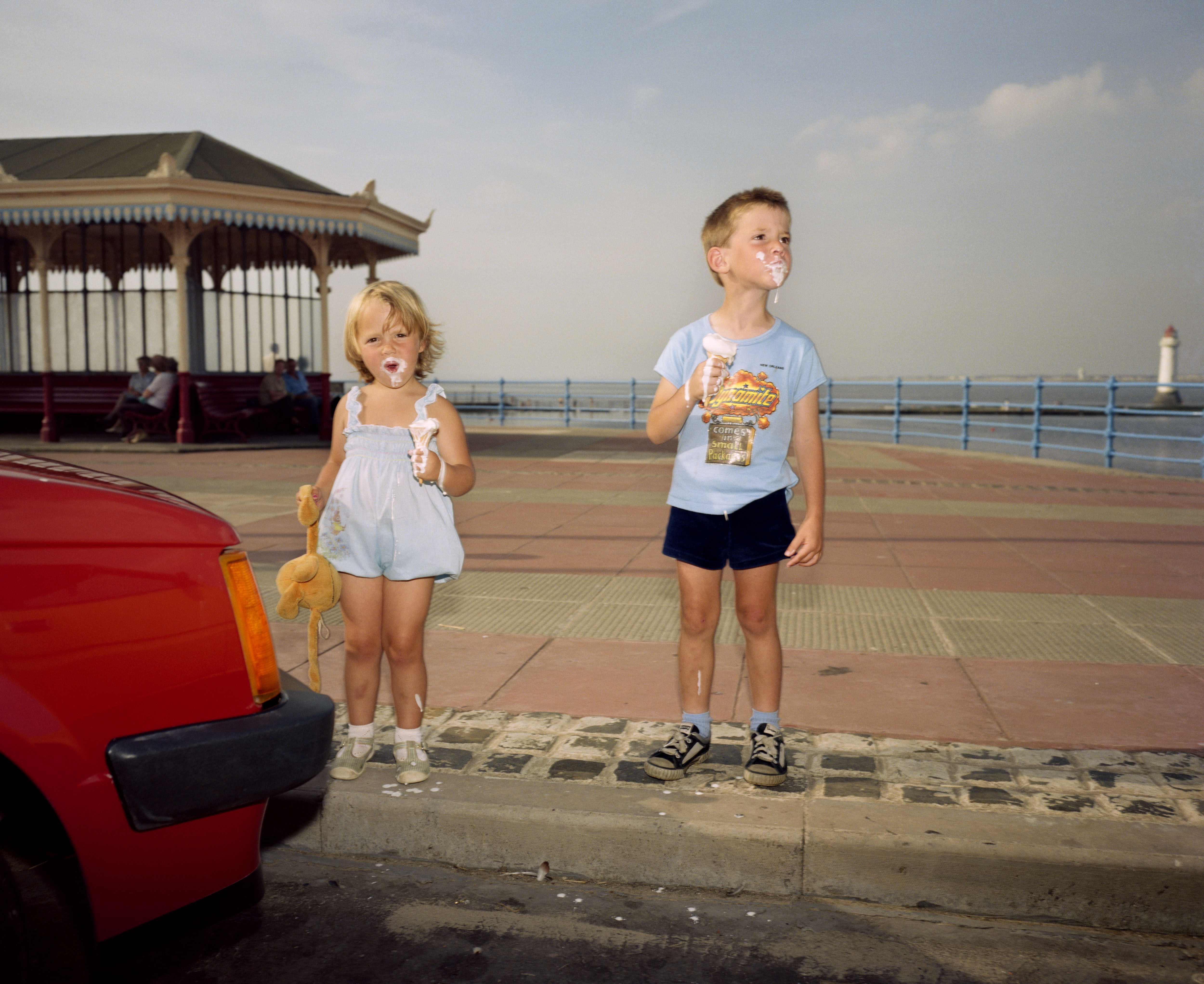
Martin Parr, New Brighton, England, 1983-85
The context of ice cream has always been inseparable from the experience of eating it: a mirror of history and culture. In Turkey, dondurma is dense and elastic, sold from brass-trimmed carts where fez-wearing vendors tease customers in playful routines. In India, kulfi is pulled from conical moulds at vividly painted stalls. In Mexico, tiled paleterías brim with rainbow ices and fruit sorbets dusted with chilli or chamoy.
Each country has long held to its aesthetic codes. But in recent summers, a new wave of parlours has emerged. Here, architects and designers approach ice cream as stagecraft, creating experimental environments that are as sensorial and inventive as the flavours themselves.
The evolution of the ice cream parlour
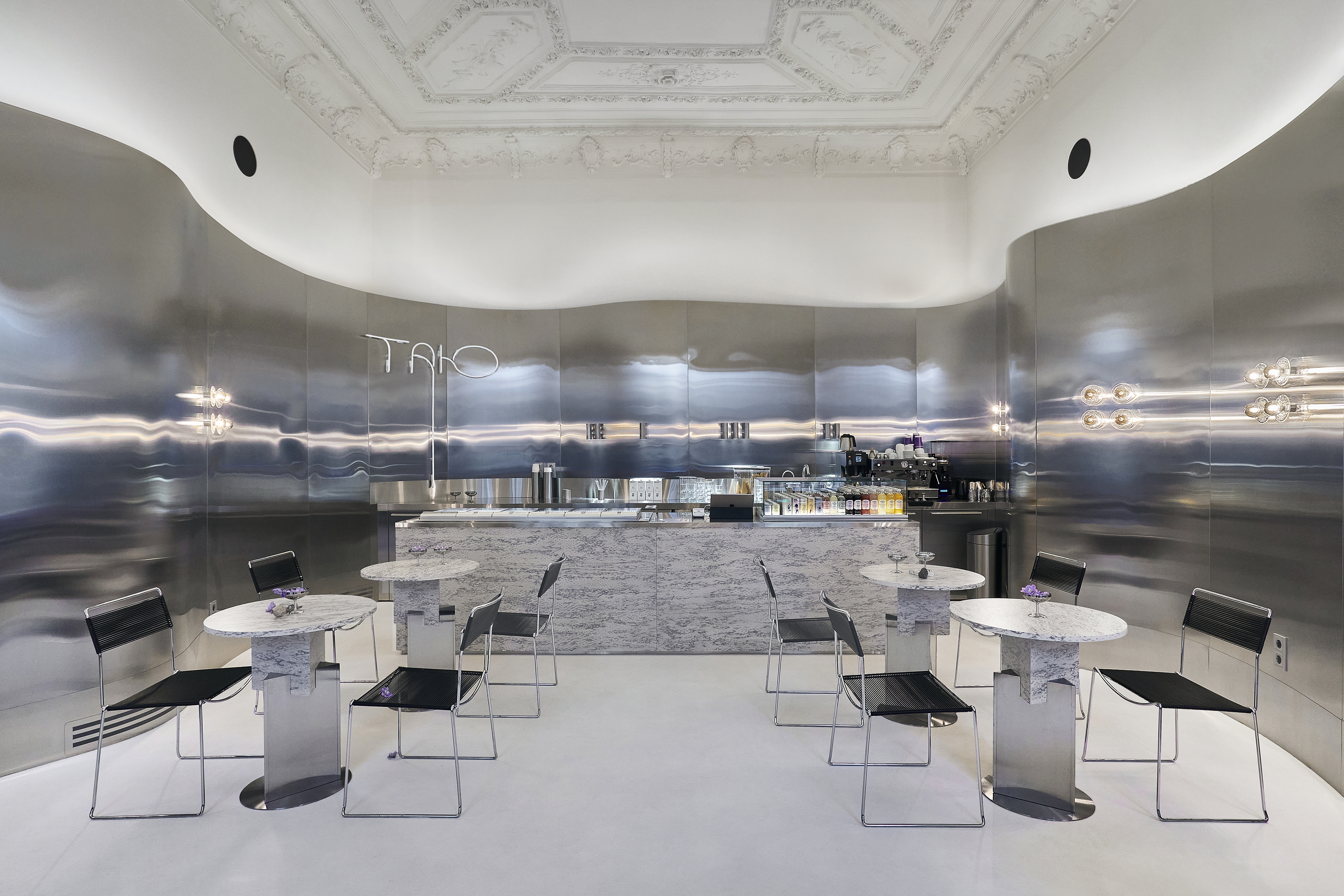
Tanu in Odessa, designed by Sivak+Partners
In Odessa, Tanu (‘Таю’ is Ukrainian for ‘I’m melting’) reframes the ice cream shop as a space of grown-up composure. Sivak+Partners resisted the usual pastel kitsch, instead wrapping the interior in undulating stainless-steel panels that ebb and flow like frozen liquid. What might have felt sterile was softened through finish: ‘Thanks to its matte, worn texture, the metal ended up resembling velvet or fabric on the walls,’ says studio founder Dmytro Sivak.
‘There’s no loud, boisterous music or children’s birthday-party vibe,’ Sivak adds. ‘Rather, it offers a calm and pleasant weekend serenity.’ This is a parlour where ice cream is contextualised as an adult ritual, not a sugar rush.
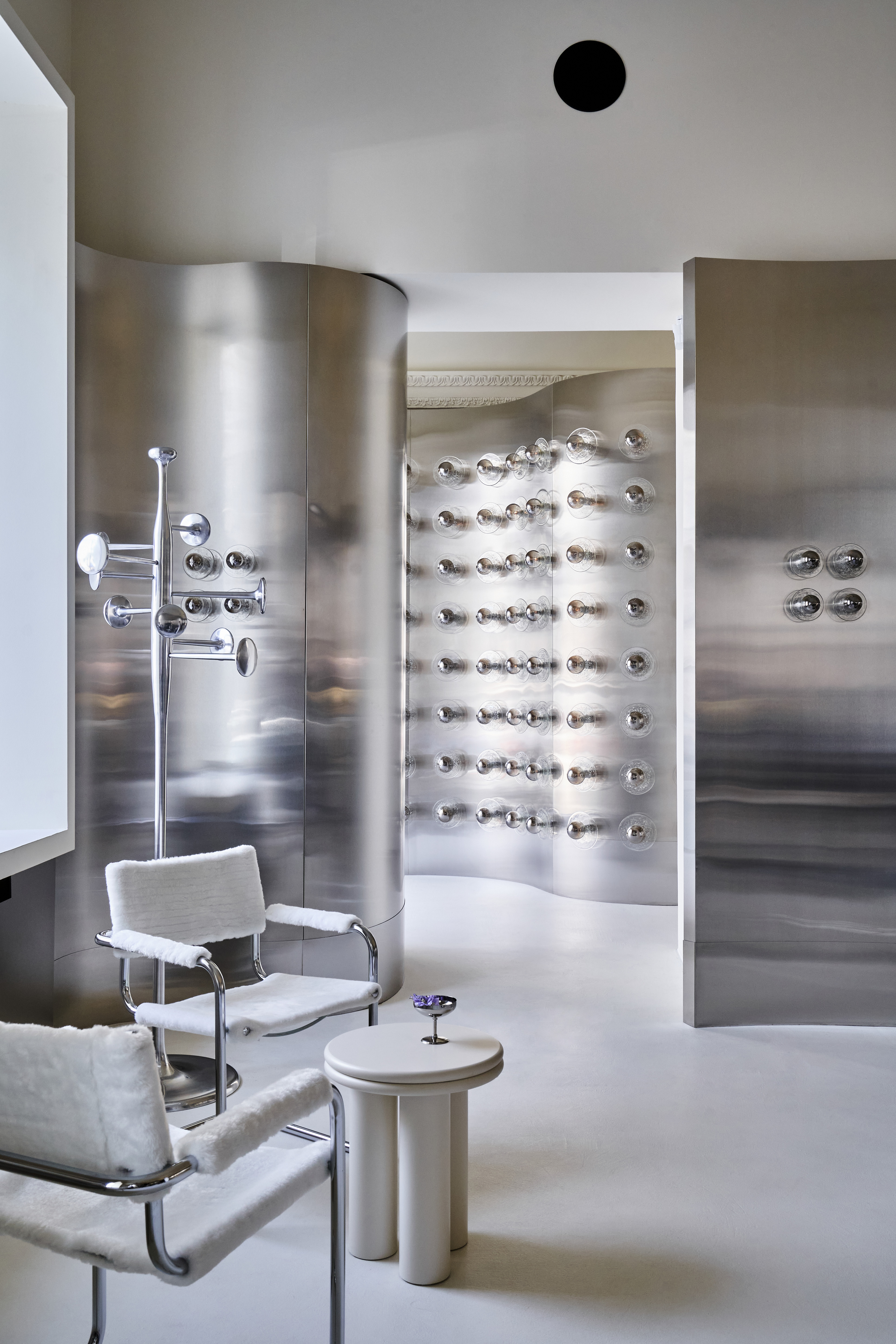
Tanu in Odessa, designed by Sivak+Partners
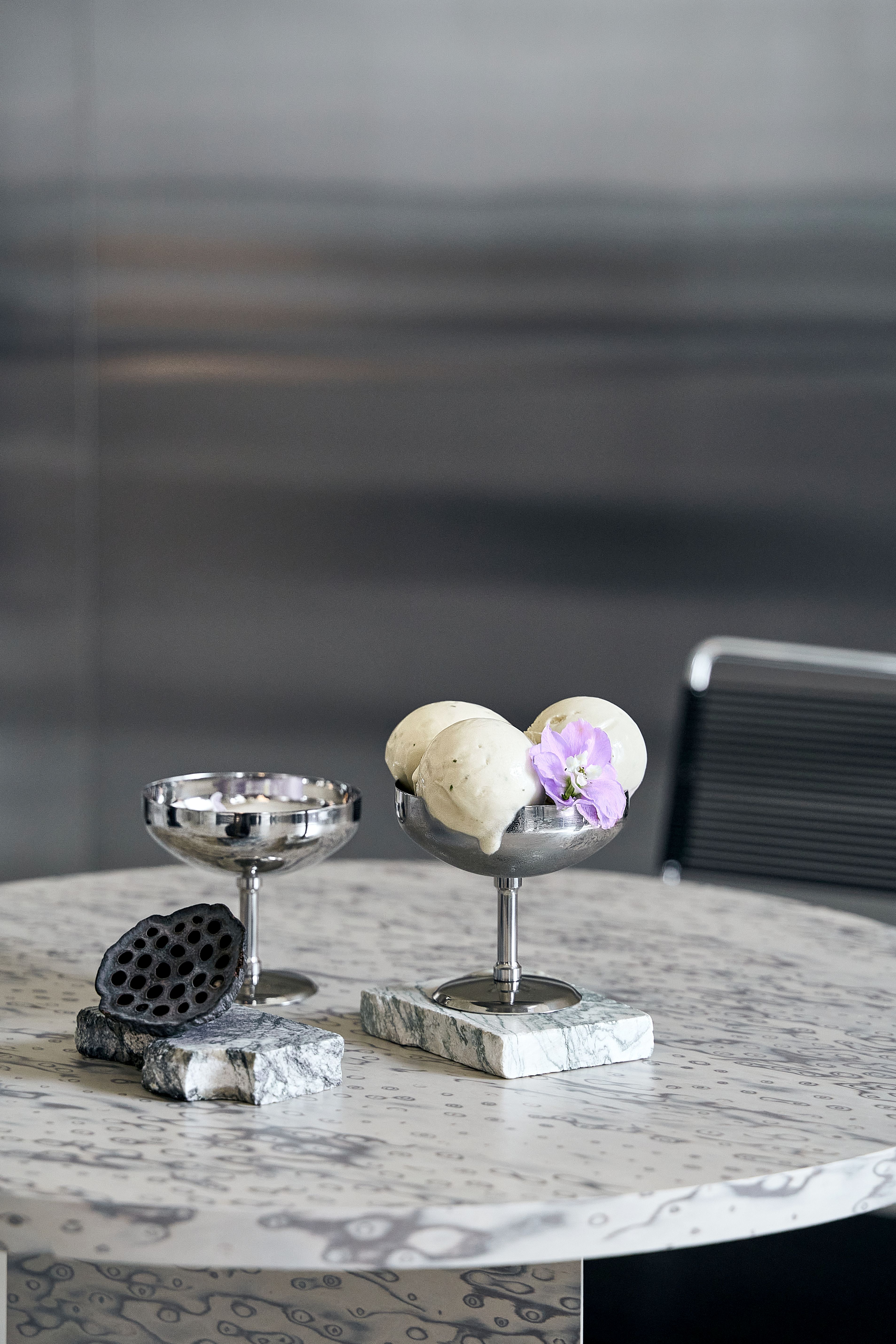
Tanu in Odessa
In a similar vein, El Equipo Creativo aimed to create something more grown-up for the design of Barcelona’s Gelato Collection by Spanish chef Albert Adrià. ‘We wanted a space that offered more than just ice cream, where each flavour would be presented as a collectable jewel,’ shares Natali Canas Del Pozo, co-founder and creative director of the studio, which borrowed aesthetics from perfumeries and jewellery stores for the project. The centrepiece is undoubtedly a glass display case designed like a block of ice.
Receive our daily digest of inspiration, escapism and design stories from around the world direct to your inbox.
Walls are lined with champagne-toned porcelain tiles, a material choice that echoes the creaminess of gelato. Overhead, octagonal glass light fixtures emit a cool glow. The entire design slows consumption: you don’t grab and go, you approach the counter as though entering a gallery. Adrià’s numbered, ever-changing flavours – recent ones include ‘balsamic candy,’ ‘hibiscus margarita’ and ‘mango green curry’ – are almost treated like precious stones.
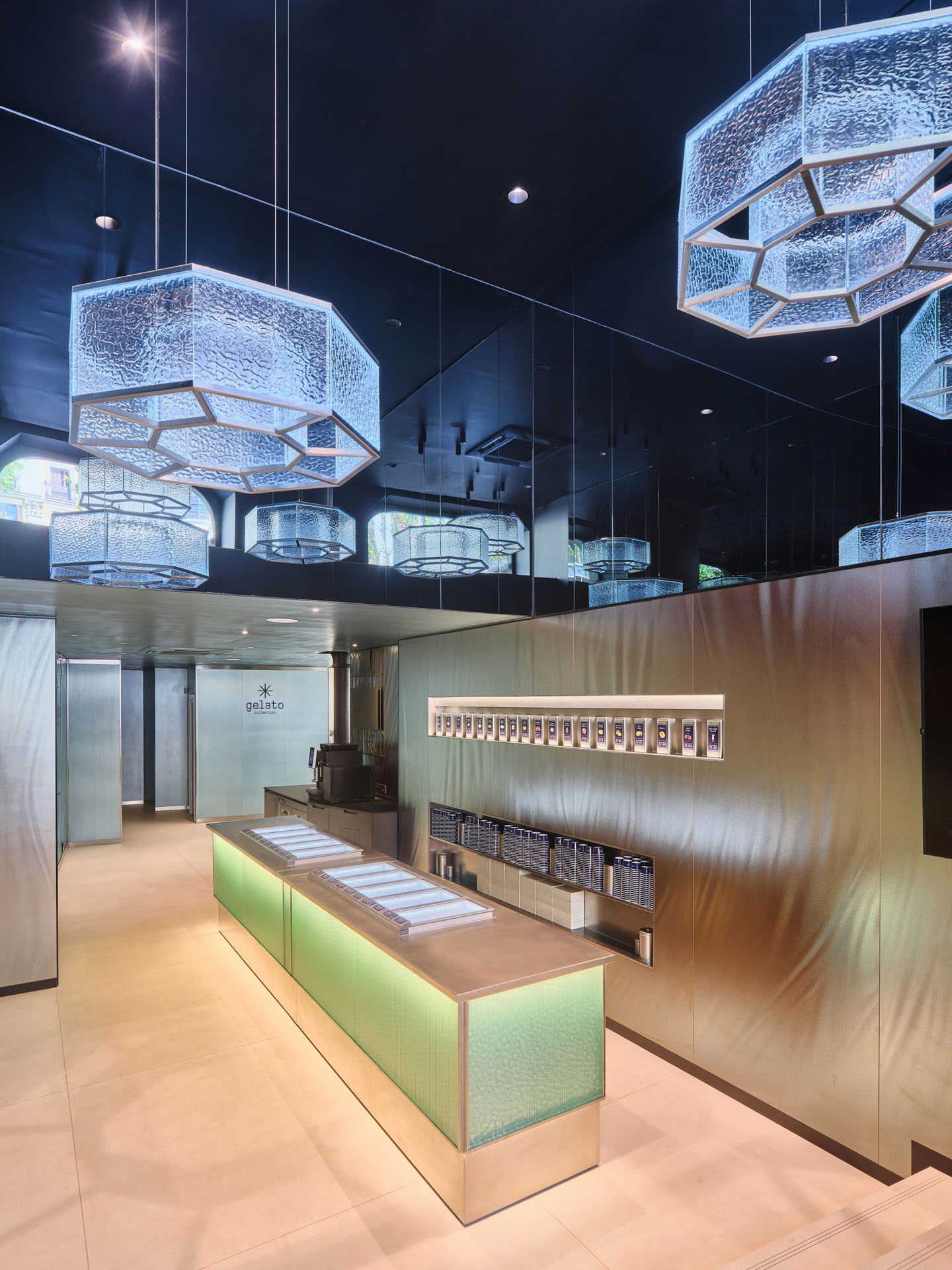
Gelato Collection in Barcelona, designed by El Equipo Creativo
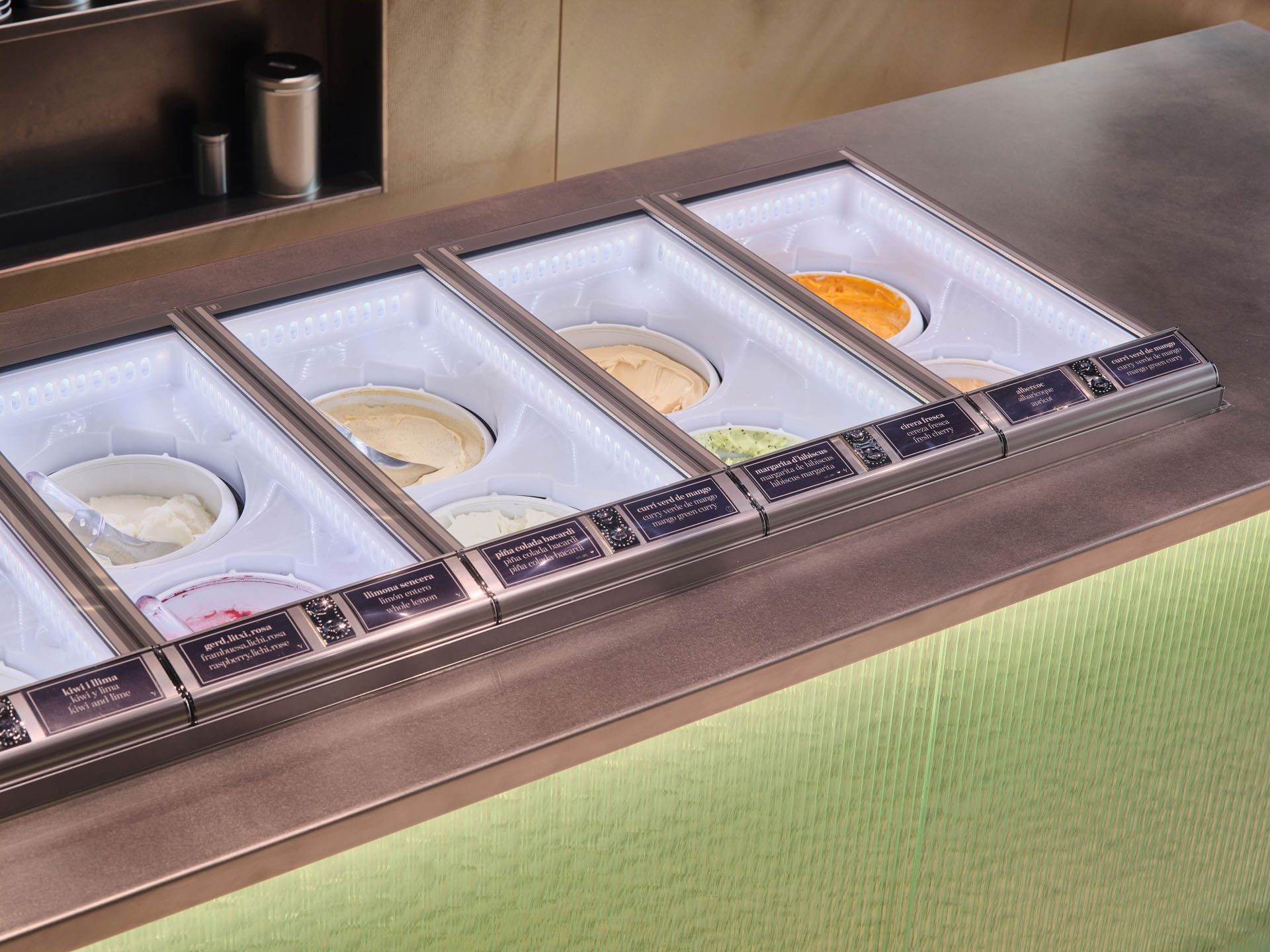
Gelato Collection in Barcelona
Nearby, Amiko Gelato (also in Barcelona) takes a more exuberant, lush and playful approach. Masquespacio pushed Miami Art Deco into the future with pastel geometries, sculptural seating and a shifting play of light. Tropical greenery floods the room, set against ceramics, microcement and metal, creating a deliberate clash between nature and industry. ‘Organic forms and sculptural elements, directly inspired by ice cream, are seamlessly integrated into both the furniture and décor,’ explains Borja Sánchez Marín, product designer at the studio. The effect is lushly immersive, a sensorial oasis rather than a pit stop, sitting at the intersection of juvenile and mature.
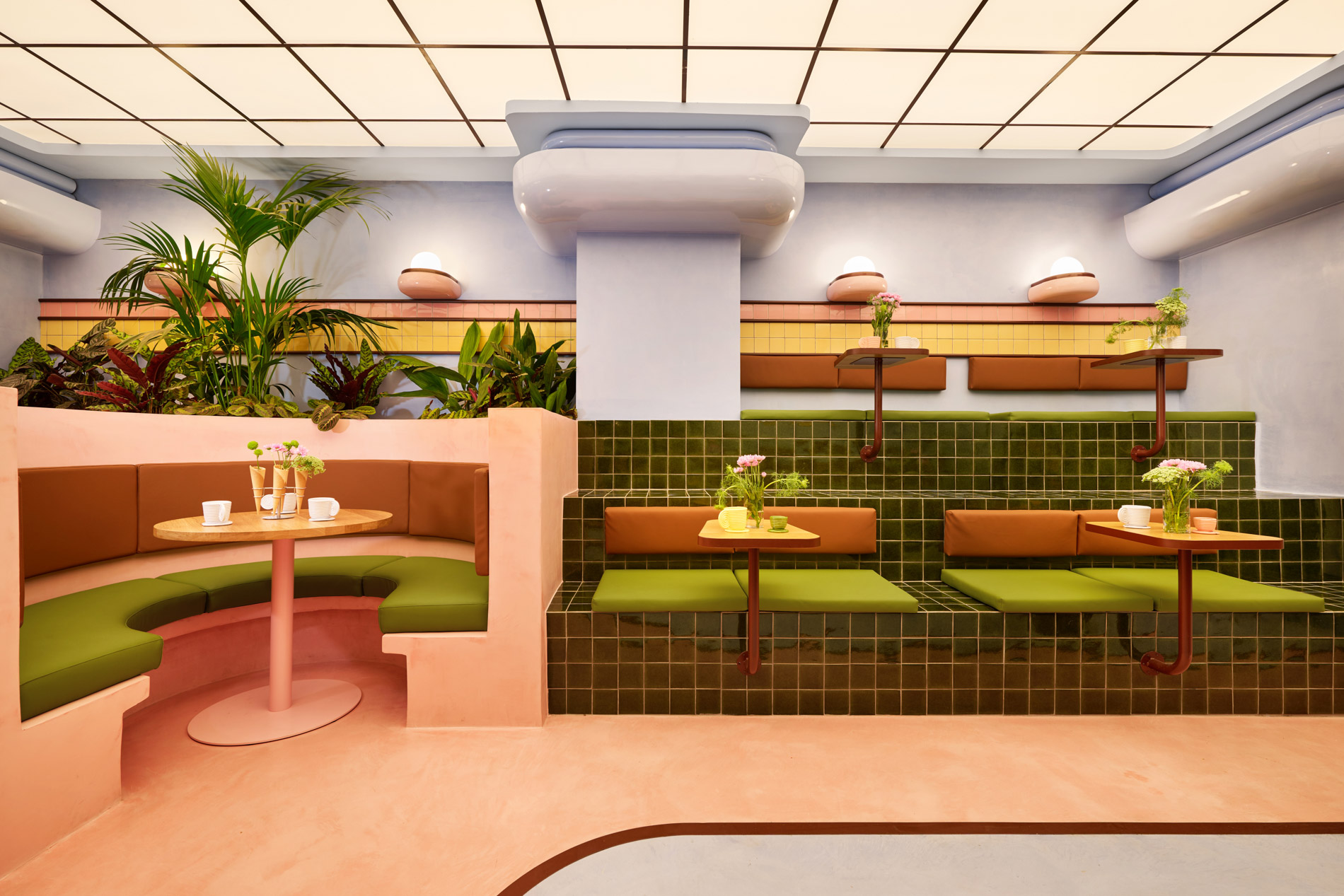
Amiko Gelato in Barcelona, designed by Masquespacio
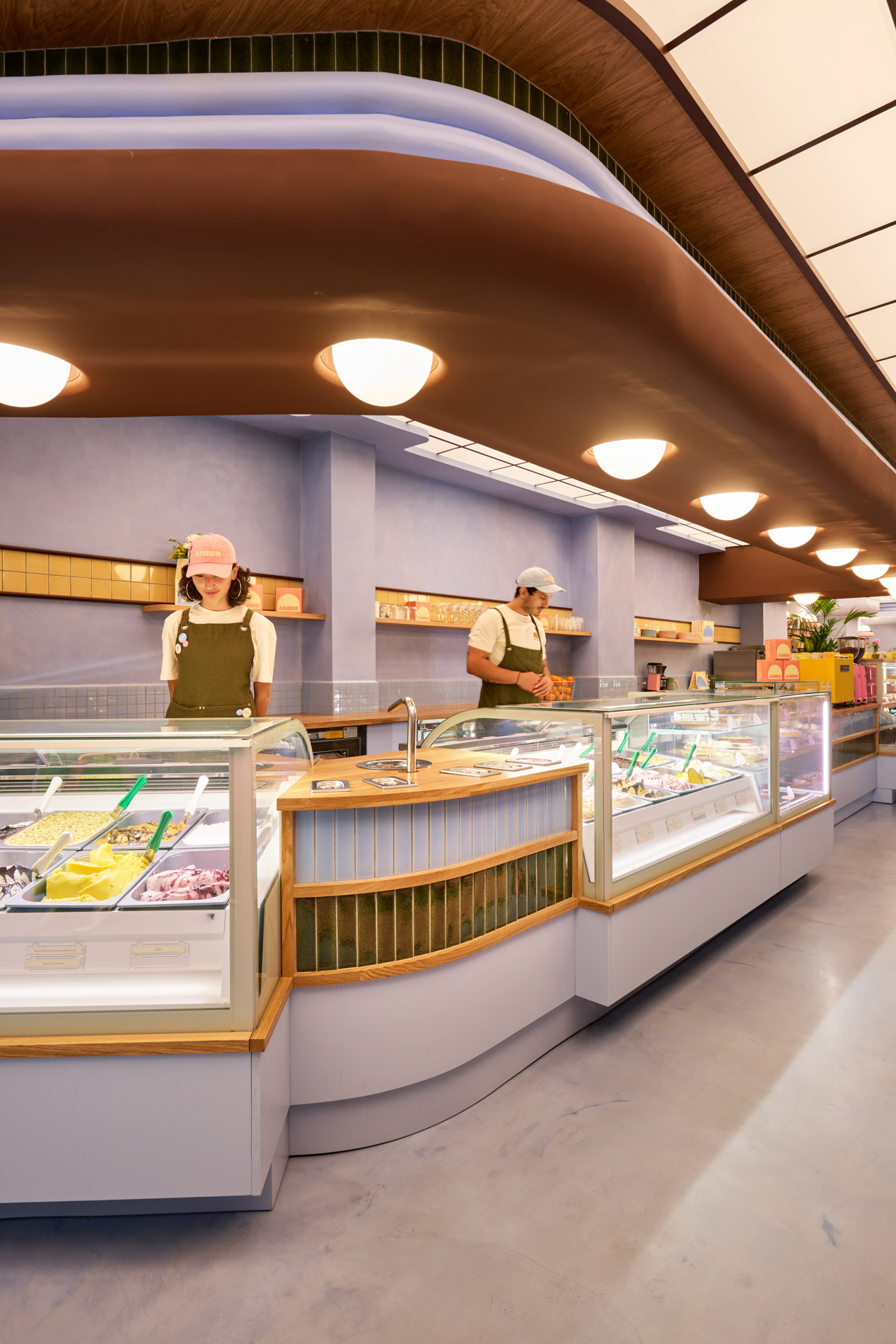
Amiko Gelato in Barcelona
Similarly, at The Dreamery in London, ice cream is recast as part of a longer, more indulgent ritual, while ensuring an immersive element: you stay for a glass of wine, under a ceiling mural that dissolves into infinity. English artist Lucy Stein created a canopy of folkloric creatures painted on unryu rice paper, backlit and reflected by three mirrored walls. The result is an enveloping dreamscape that makes time feel suspended.
The material palette – cement-coloured tiles, stainless steel bar, vintage Brutalist sconces by Marino Poccetti – sets a restrained stage, allowing the ceiling to dominate. ‘We wanted somewhere comfortable and playfully innocent,’ co-founder Alex Young says, ‘a retreat of sorts from cynicism and seriousness.’ Traditional English sweetshops informed the design, but nostalgia is filtered through sophistication.
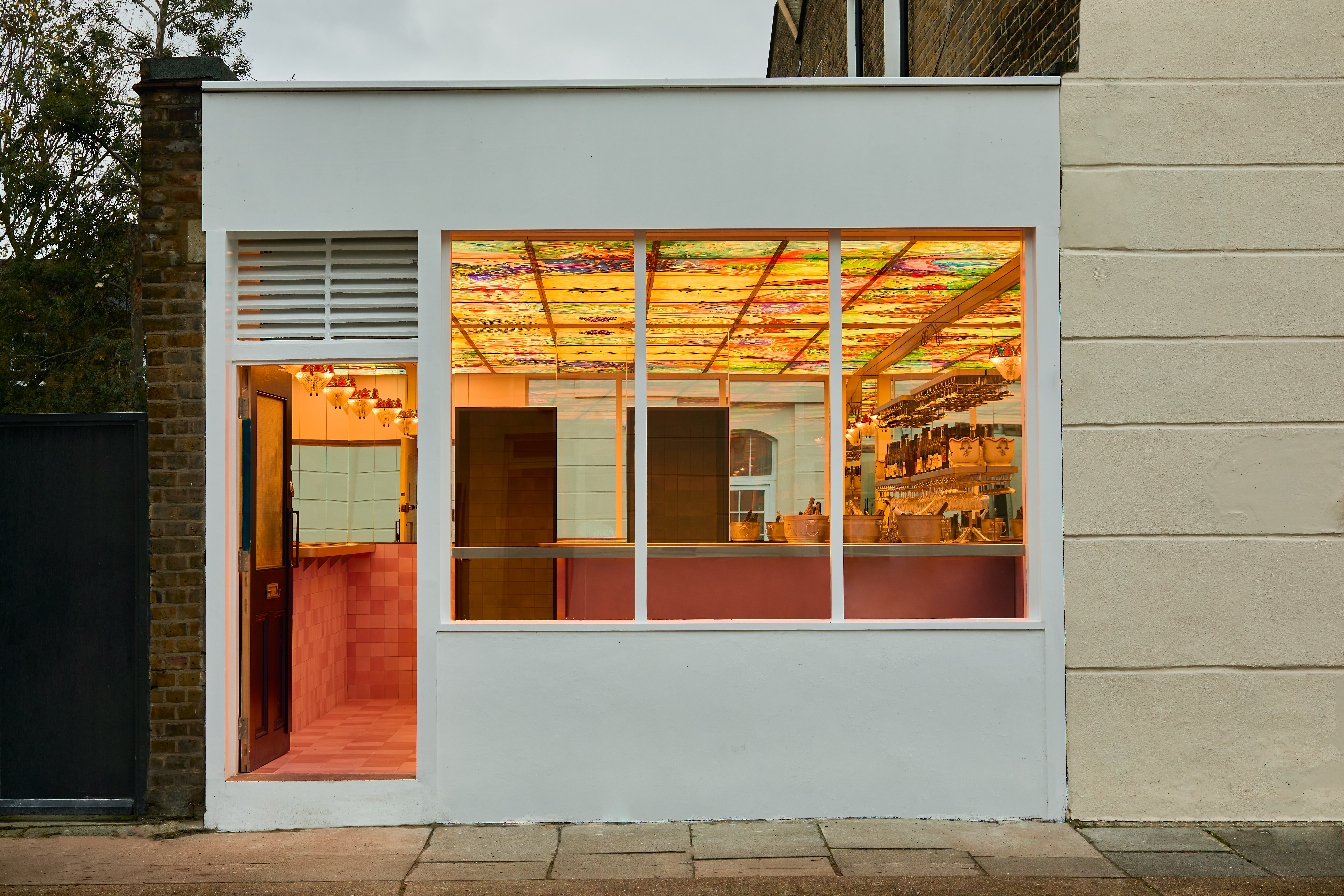
The Dreamery in London
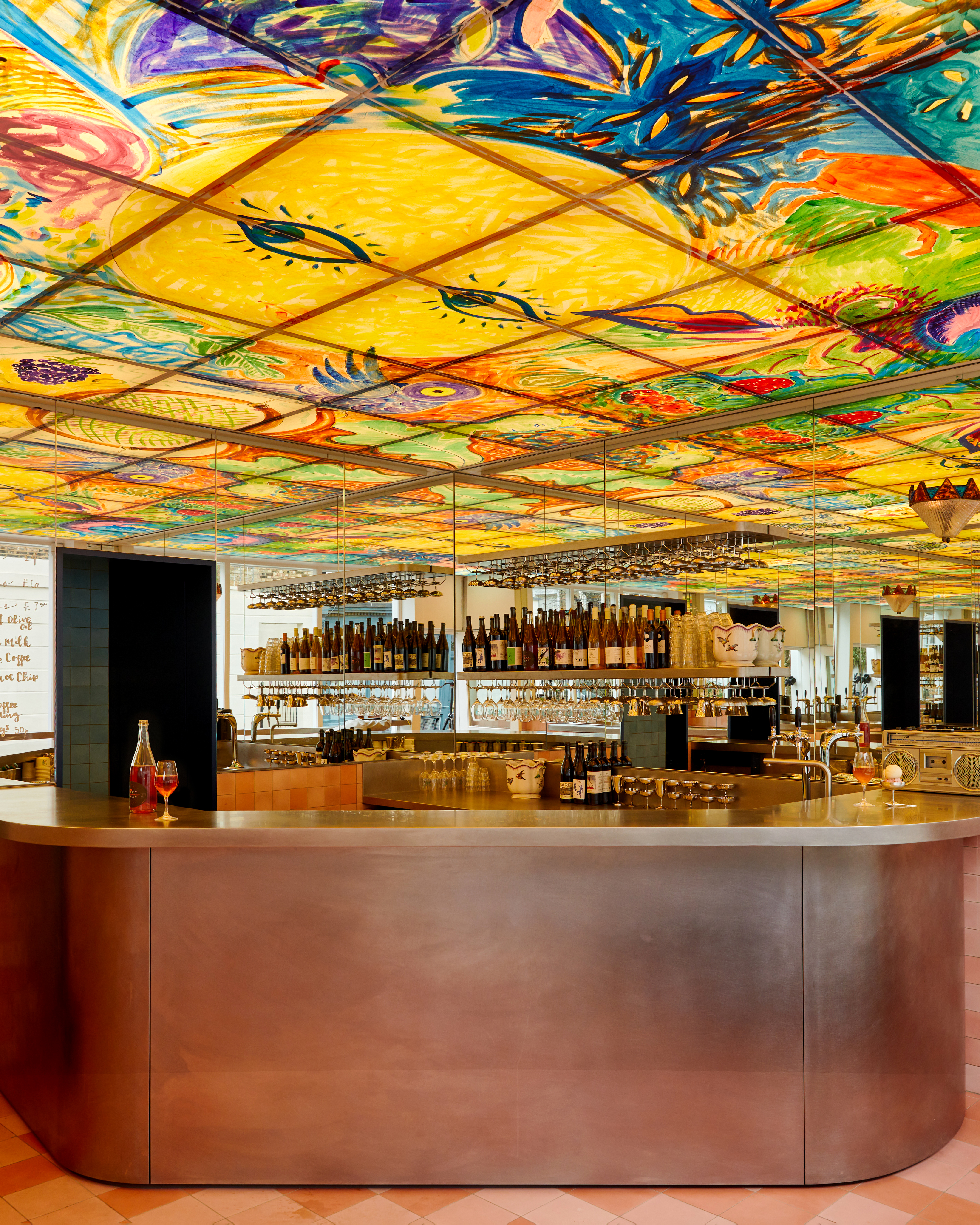
The Dreamery in London
Elsewhere, designers are looking at the past to inform the future of the ice cream parlour, while tuning it into a creative adult ritual. Scooped by Demetres at Square One in Toronto plays with cinematic artifice. ‘We were inspired by the simple, pared-down sets of 1940s and ‘50s films like The Gang’s All Here and An American in Paris, which used design elements like half-height partitions and gestural, line-painted backdrops that disrupt the vastness of the studio sets and ask the audience to use their imagination,’ explains Kfir Gluzberg, founder and principal at Kilogram Studio.
Fluted glass clad with mirrored film refracts light and movement, while perforated steel panels, lacquered with a soft pink automotive finish, shimmer under changing light. This choreography is deliberate: with no colourful tubs on display, attention shifts to the reveal of the scoop itself. ‘The lack of one clear focal point and the monochromatic palette draw heightened focus on the moment the ice cream is revealed,’ the architect notes.
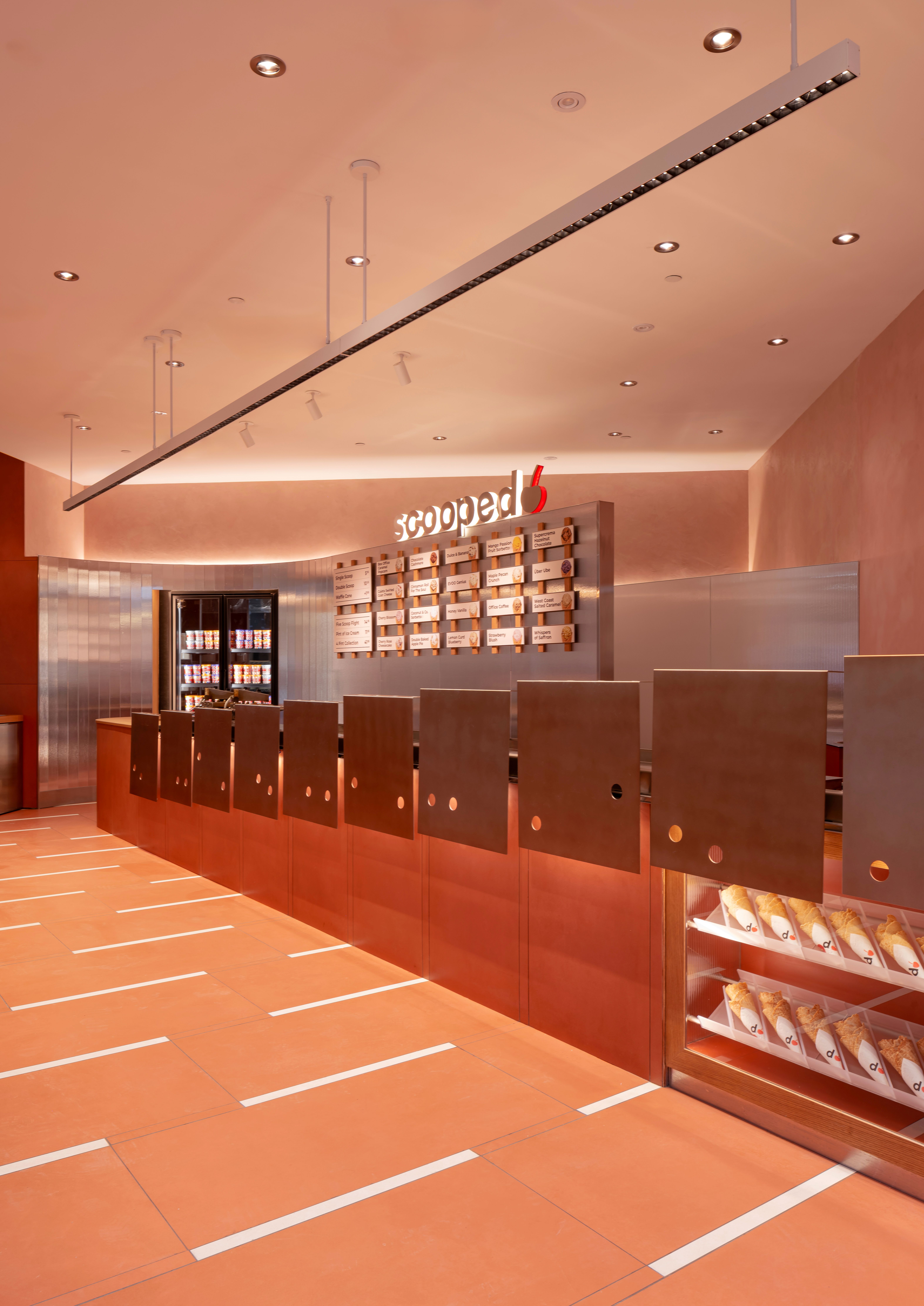
Scooped at Square One in Toronto, designed by Kilogram Studio
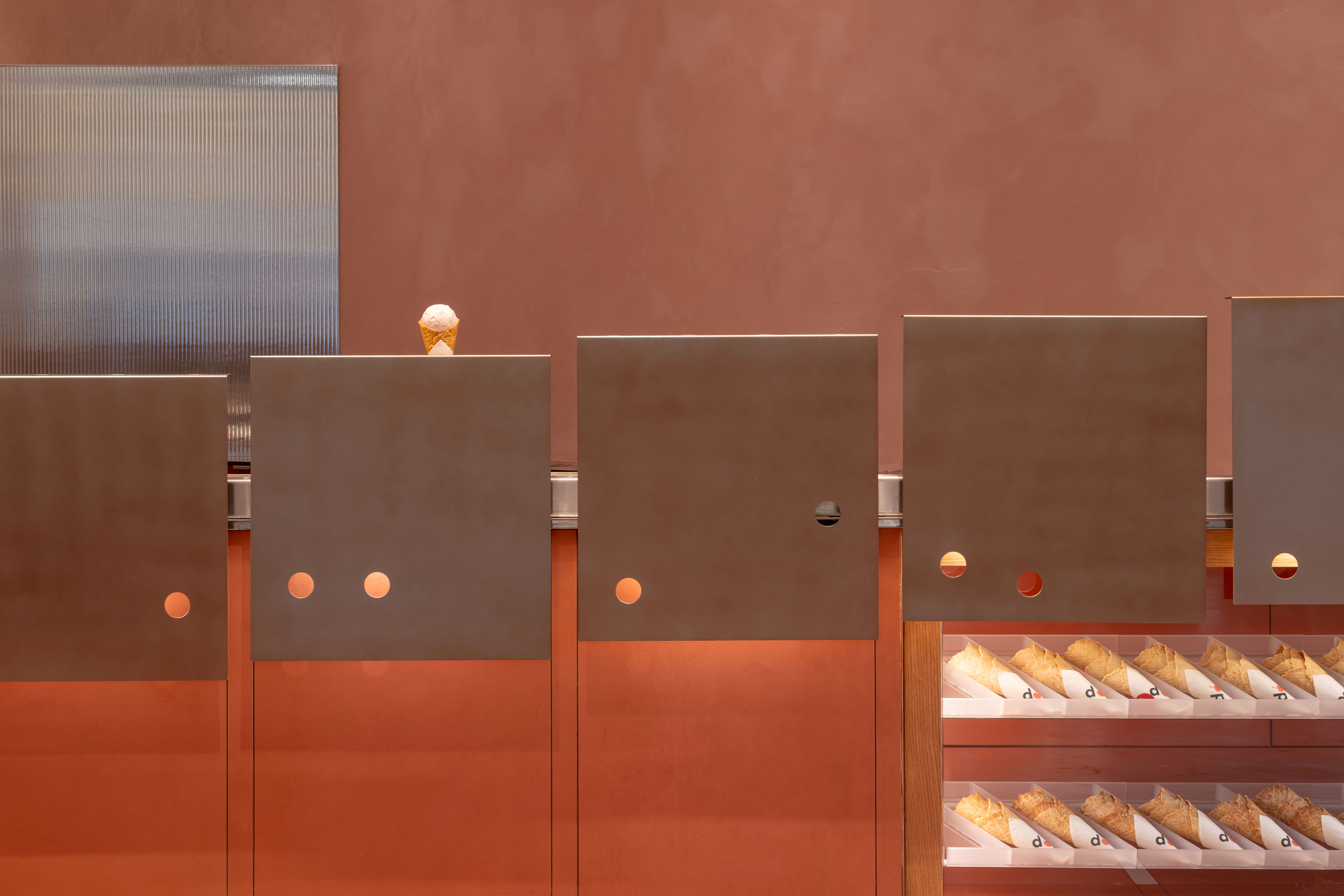
Scooped at Square One in Toronto
Meanwhile, Gelato Messina’s Sydney outposts show how retro language can be sharpened into a contemporary brand identity. The Newtown site – described by Sans-Arc Studio as ‘a bit retro, a bit 1970s, but also a bit shiny’ – works with a narrow footprint, squeezing circulation around the central freezer. The architects borrowed cues from diners and mid-century gelato bars: timber panelling, a black-and-white chequered floor, and compact counter lines.
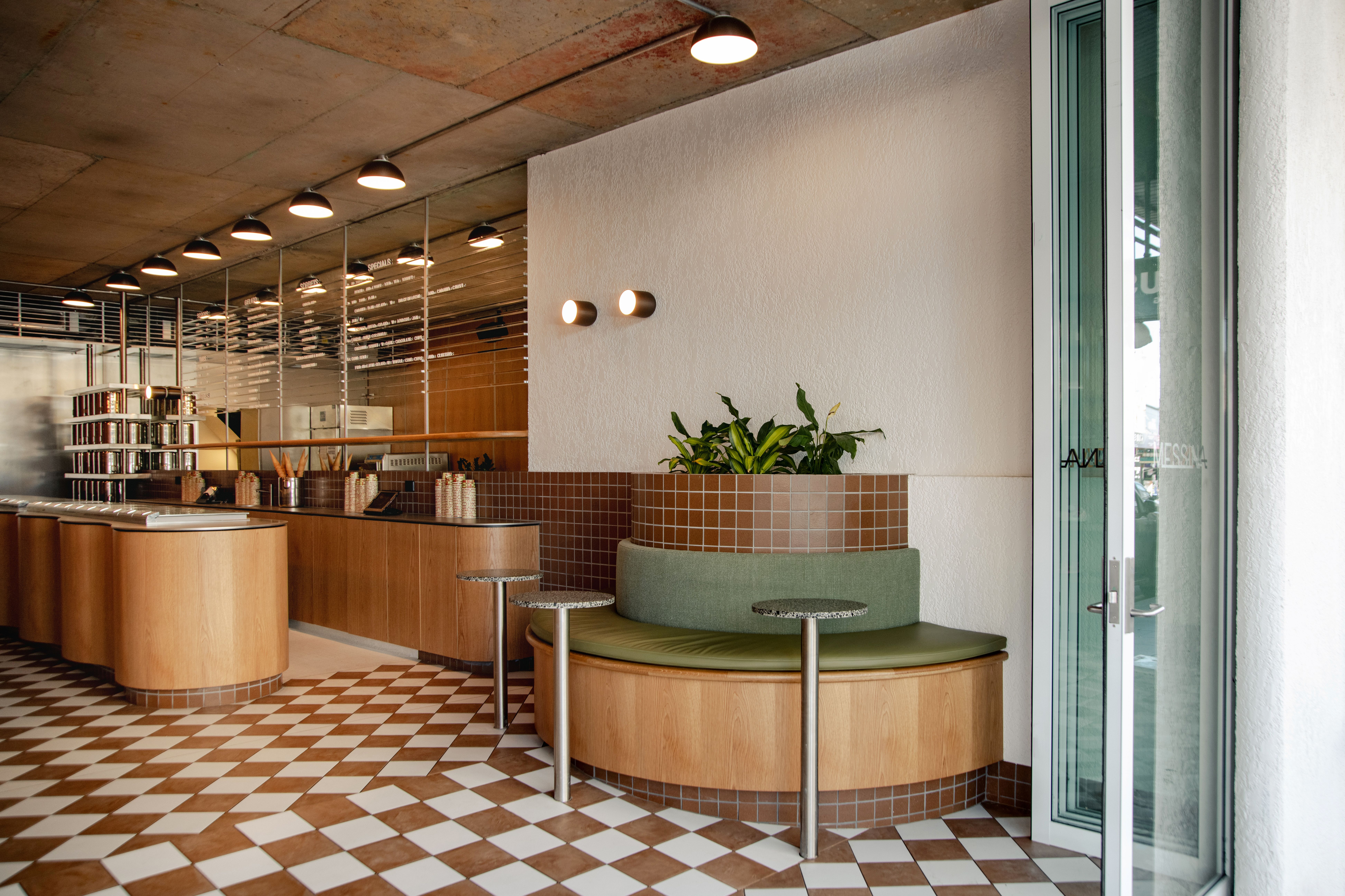
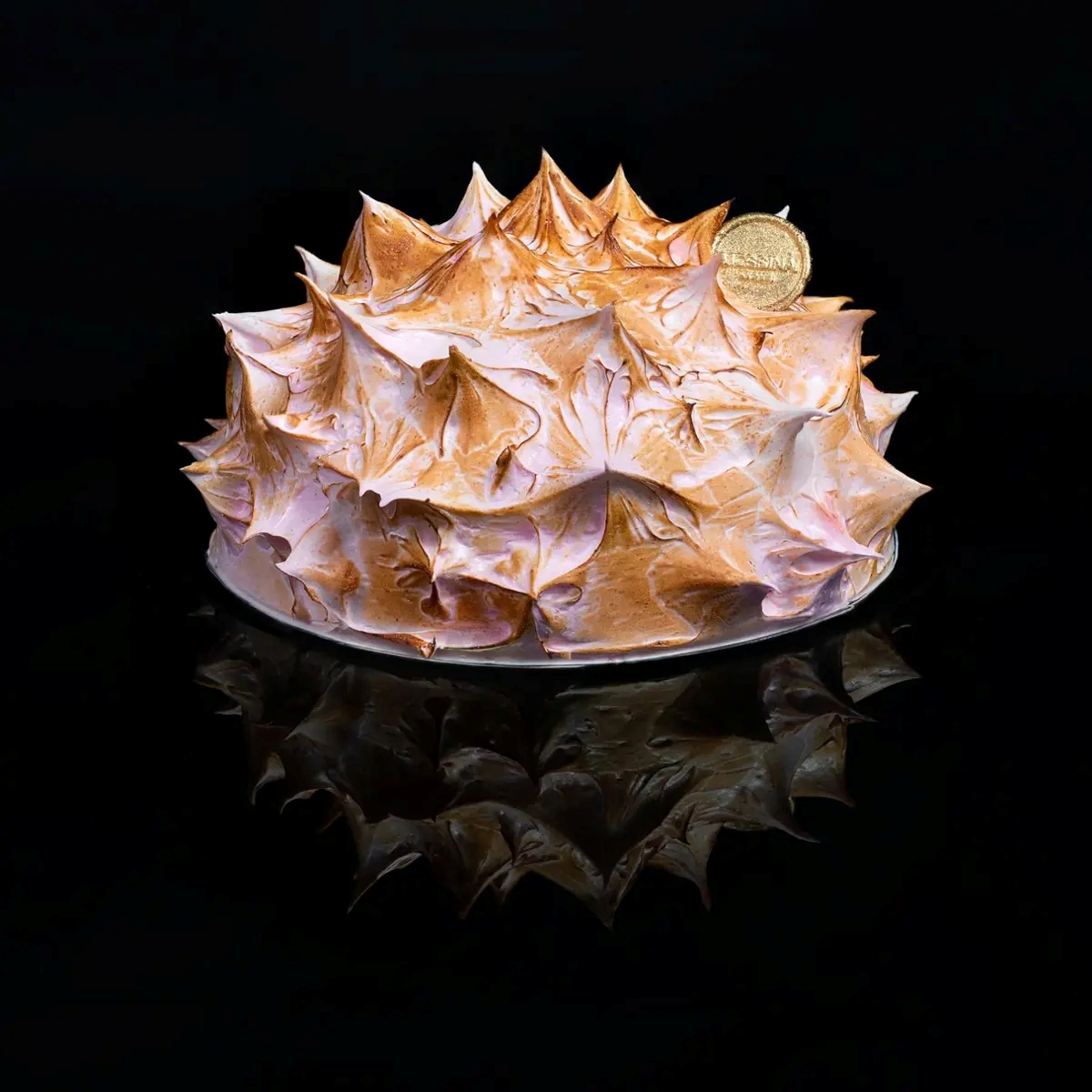
Bombe Alaska at Gelato Messina, Newtown
In Redfern, the diner influence is pushed further: cork wall panels and spotted gum bullnose battens hug bright orange light boxes, giving a vivid postmodern pop to the brand’s pint-sized offering. The atmosphere is cheerful yet disciplined, part retro homage, part contemporary riff. For Sans-Arc, each Messina outpost is an opportunity to evolve the brand language across multiple sites: ‘developing it over several spaces, improving and becoming more unique with time.’ Here, the parlour becomes an iterative brand experiment rather than a one-off showcase.
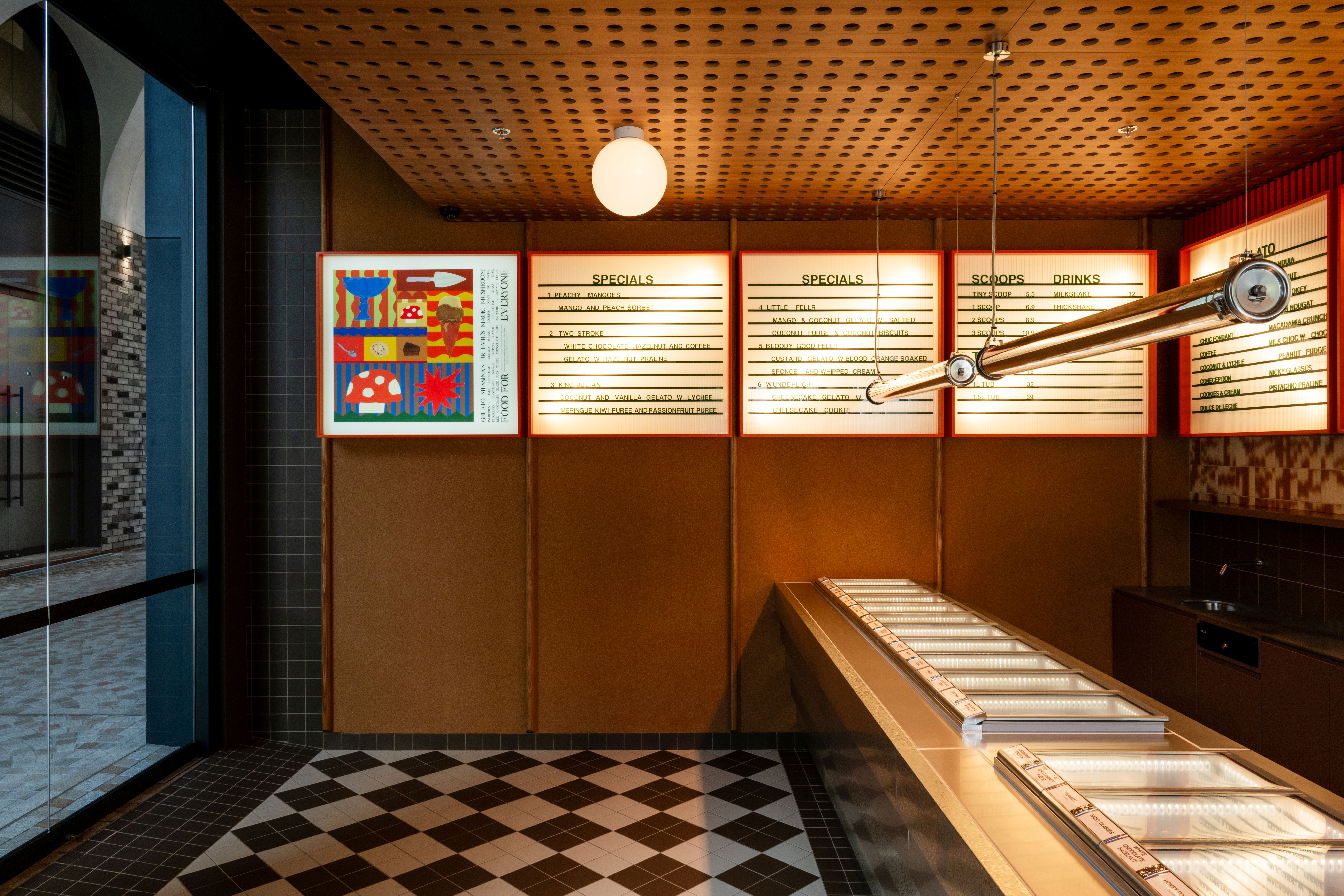
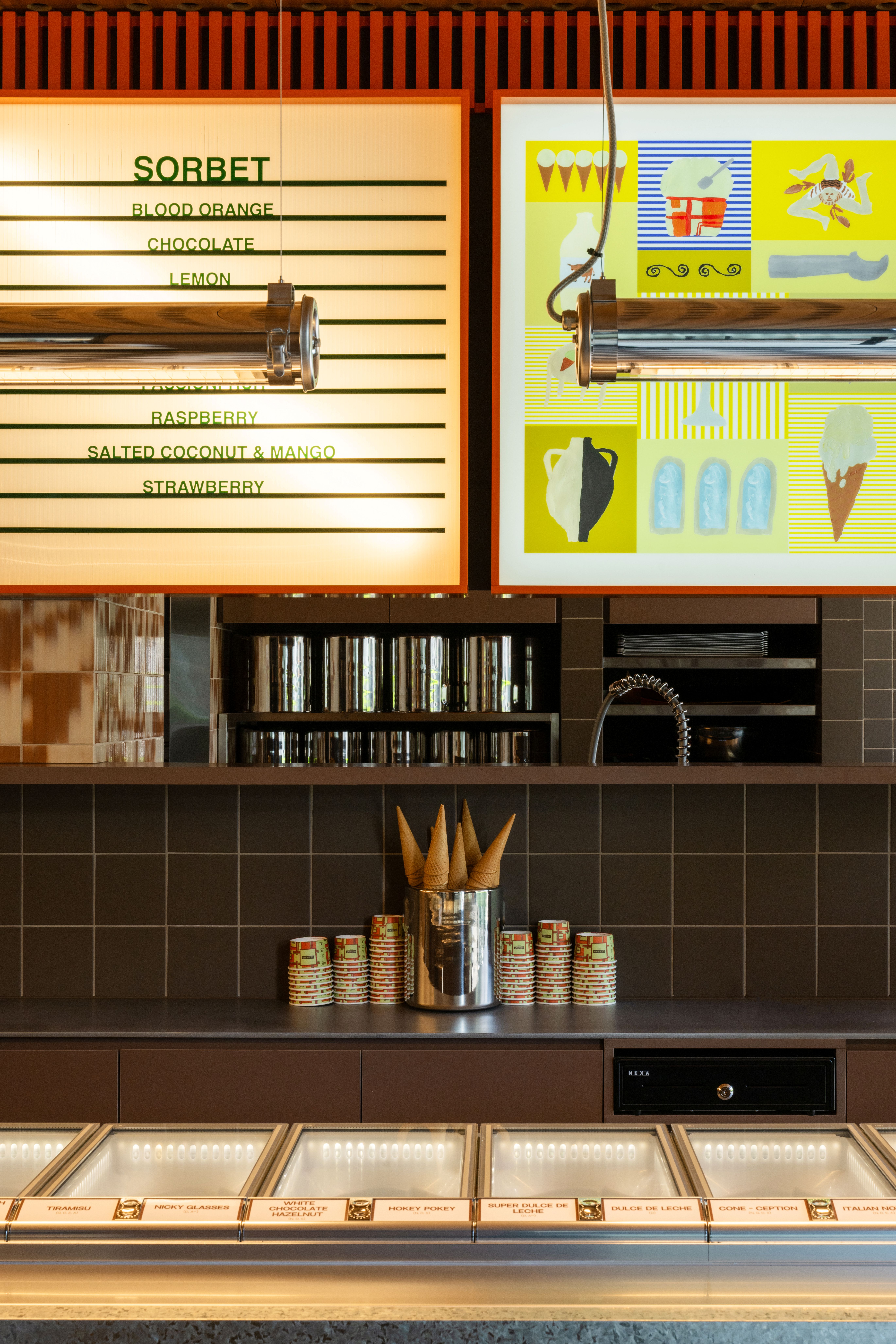
The new ice cream parlour occupies a threshold: between child-coded nostalgia and adult sophistication, between memory and reinvention. Designers are not erasing the kitsch traditions of the past, but translating them into new forms: velveted steel, jewel-like vitrines, dreamscape ceilings. The result is a typology redefined by tension; playful yet serious, indulgent yet reflective. Ice cream becomes both an artefact and a stage, suspended between different life stages.
And in each, the ritual itself is re-engineered. Whether through conceal-and-reveal, immersive theatre or sensory overload, ice cream is no longer a snack, but architecture’s most playful act of indulgence.
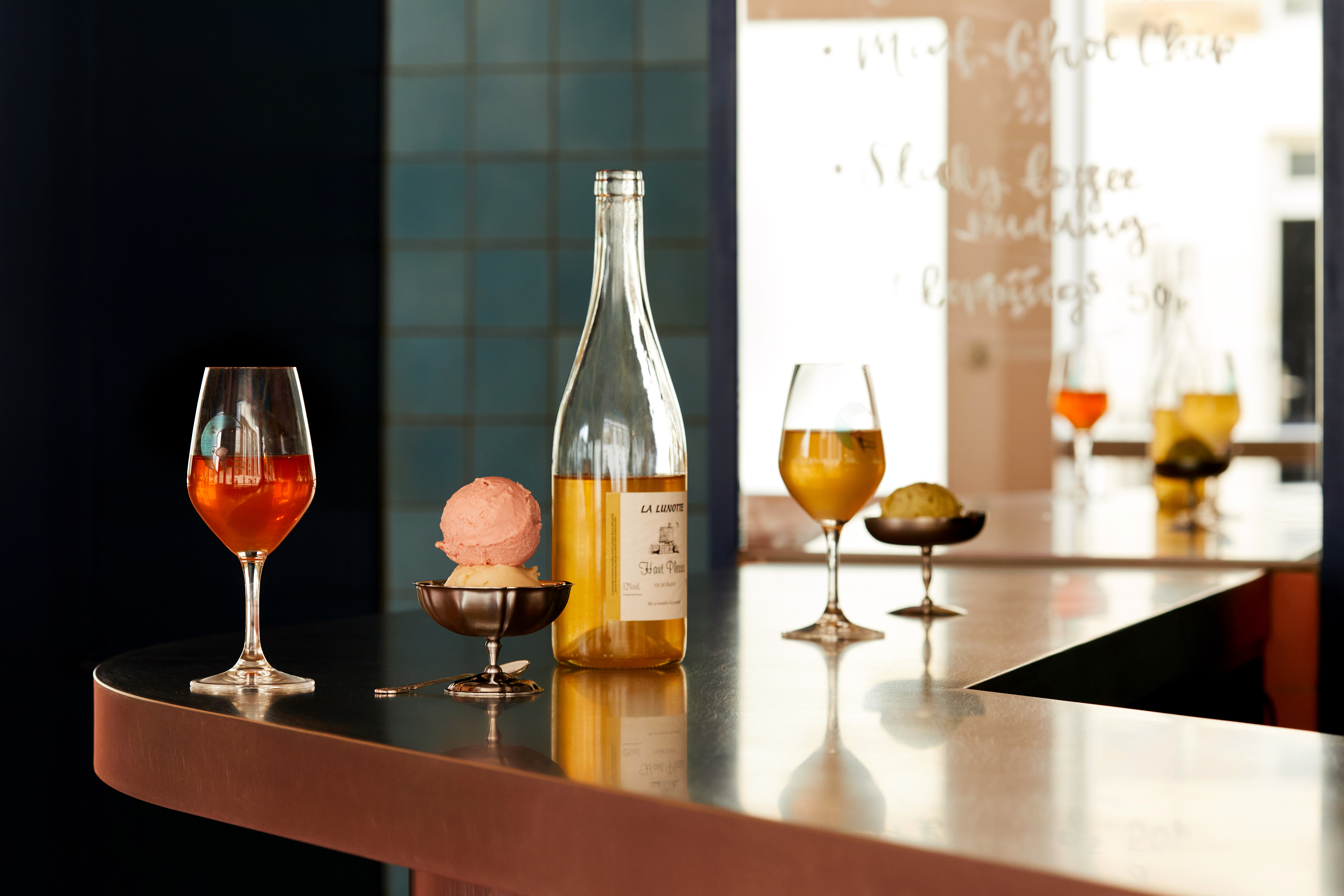
The Dreamery in London
Sofia de la Cruz is the Travel Editor at Wallpaper*. A self-declared flâneuse, she feels most inspired when taking the role of a cultural observer – chronicling the essence of cities and remote corners through their nuances, rituals, and people. Her work lives at the intersection of art, design, and culture, often shaped by conversations with the photographers who capture these worlds through their lens.
-
 Our guide to shopping from fashion’s rising stars and independent makers this festive season
Our guide to shopping from fashion’s rising stars and independent makers this festive seasonAs part of our Uprising series – which celebrates fashion’s rising talents – Orla Brennan collates the ways you can invest in independent brands for truly special gifting
-
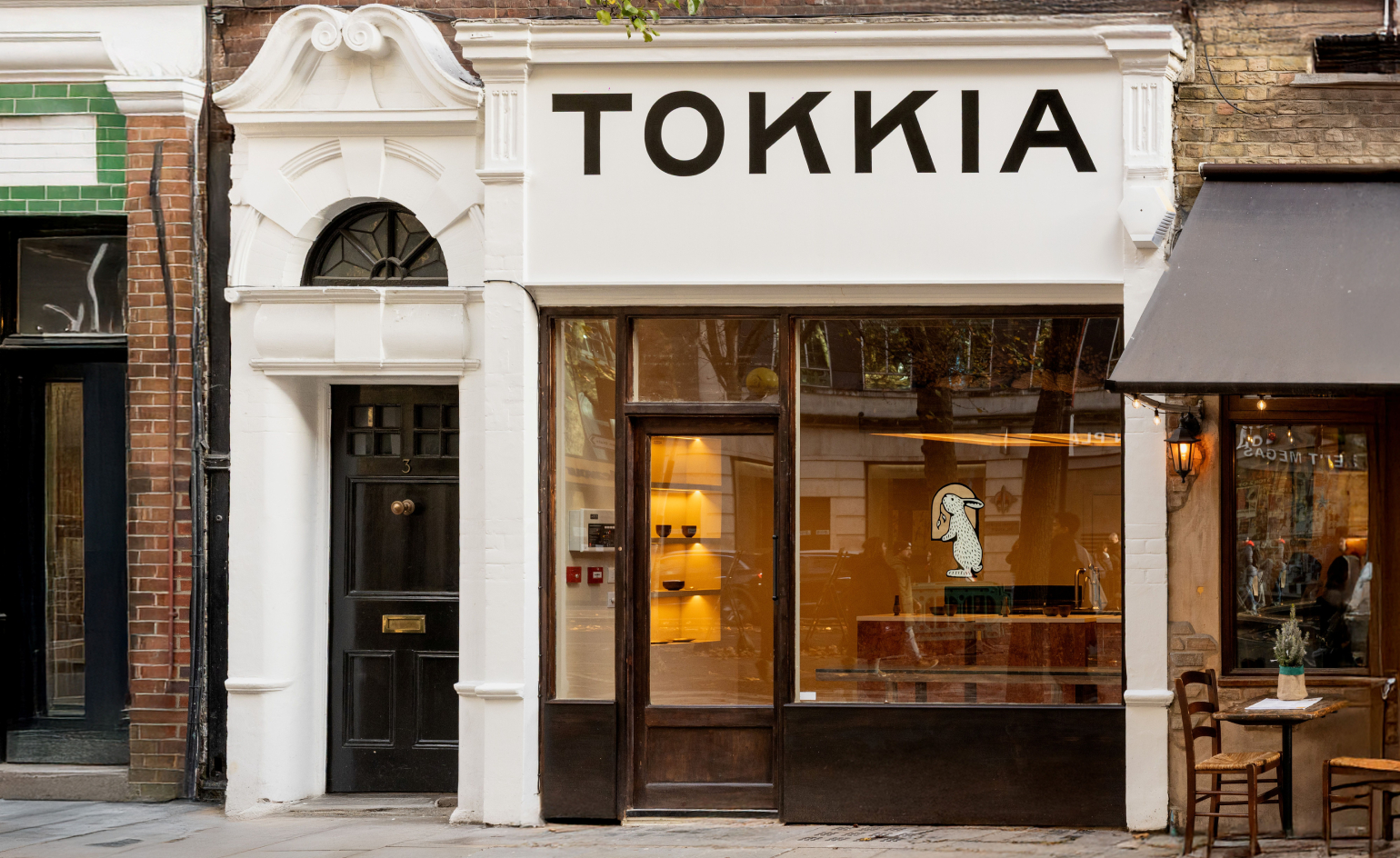 Follow the white rabbit to London’s first Korean matcha house
Follow the white rabbit to London’s first Korean matcha houseTokkia, which translates to ‘Hey bunny’ in Korean, was designed by Stephenson-Edwards studio to feel like a modern burrow. Take a look inside
-
 Sean Ono Lennon debuts music video for ‘Happy Xmas (War Is Over)’
Sean Ono Lennon debuts music video for ‘Happy Xmas (War Is Over)’The 11-minute feature, ‘War is Over!’, has launched online; watch it here and read our interview with Sean Ono Lennon, who aimed to make a music video ‘more interesting’
-
 Follow the white rabbit to London’s first Korean matcha house
Follow the white rabbit to London’s first Korean matcha houseTokkia, which translates to ‘Hey bunny’ in Korean, was designed by Stephenson-Edwards studio to feel like a modern burrow. Take a look inside
-
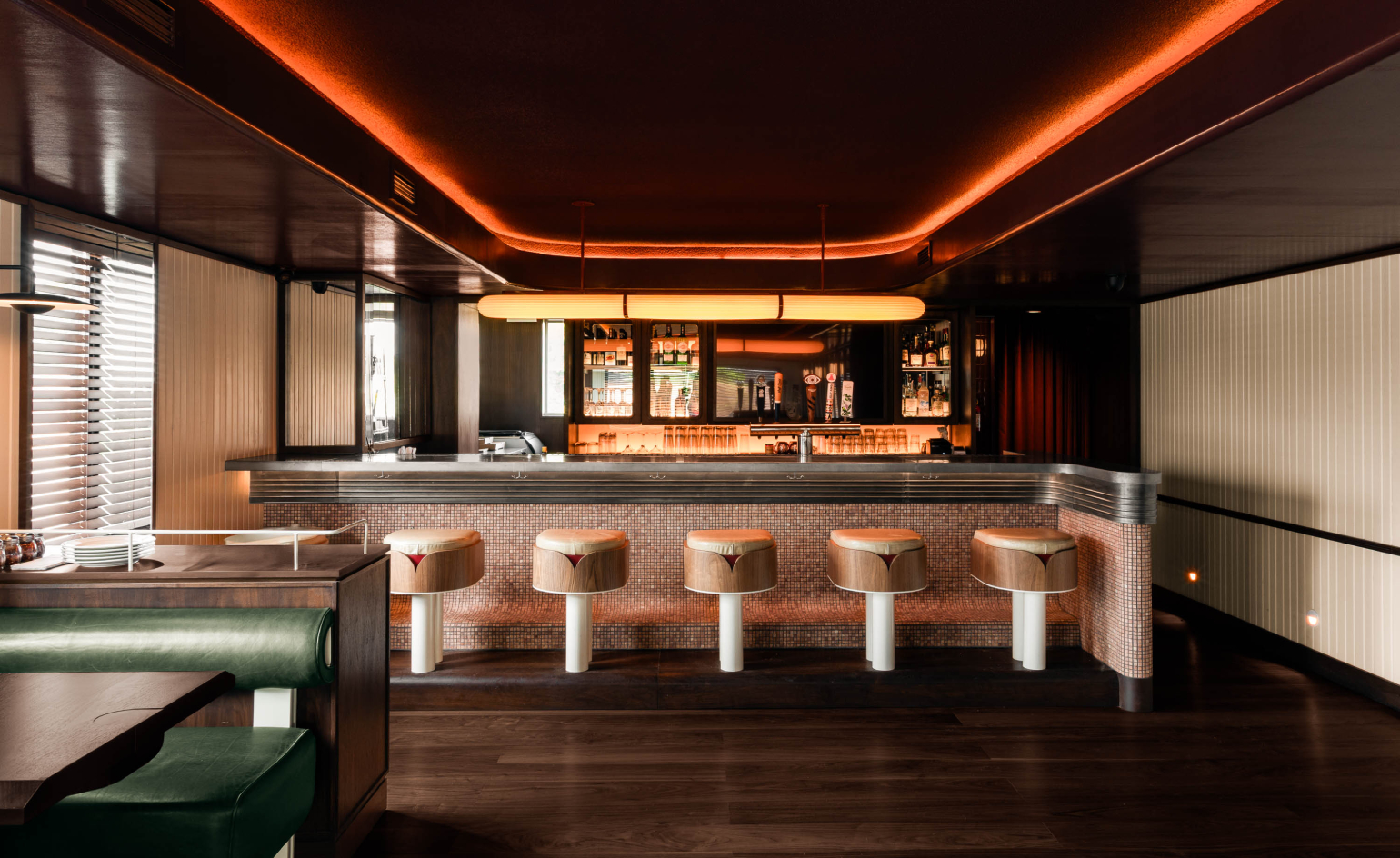 This Toronto pizzeria hides a sultry bar with serious bite
This Toronto pizzeria hides a sultry bar with serious biteNorth of Brooklyn unveils a fresh, two-level outpost where crisp, light-filled minimalism gives way to a warmer, neon-lit upstairs area
-
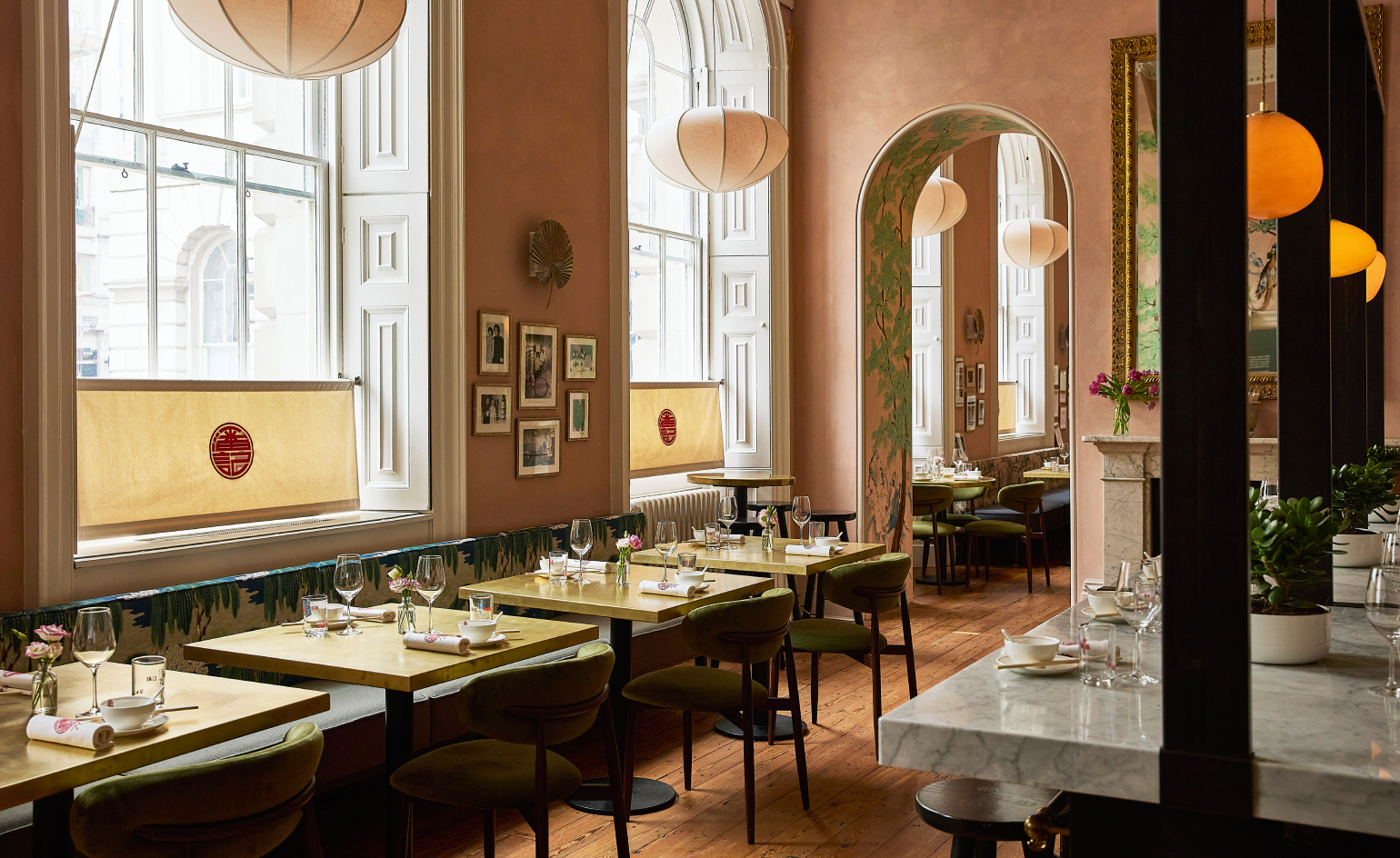 Poon’s returns in majestic form at Somerset House
Poon’s returns in majestic form at Somerset HouseHome-style Chinese cooking refined through generations of the Poon family craft
-
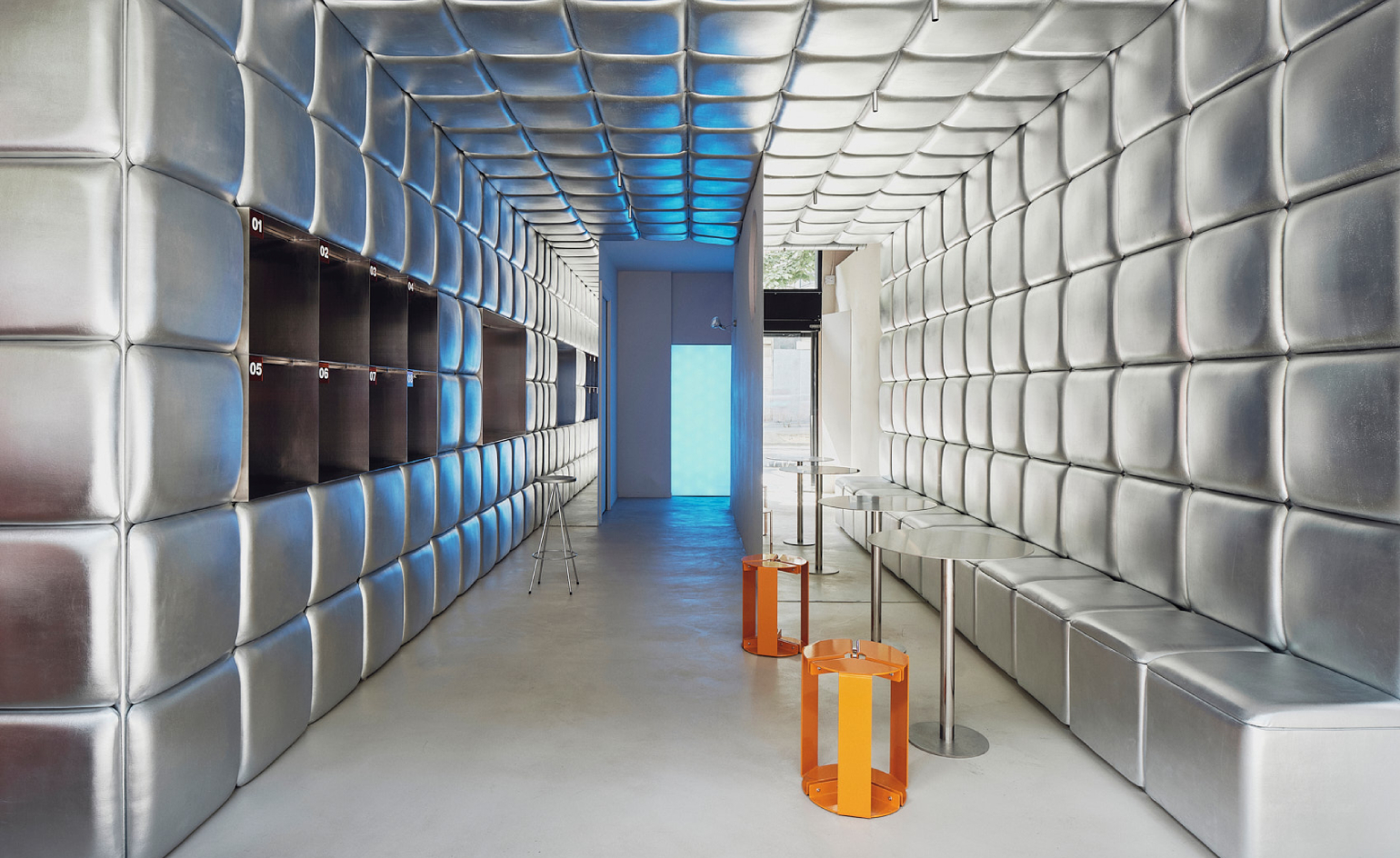 Enter a metallic, maximalist playground for pasta lovers in Barcelona
Enter a metallic, maximalist playground for pasta lovers in BarcelonaRelleno’s first flagship restaurant pushes casual dining into a chrome-lined future, wrapping guests in a sculptural grid that riffs on the geometry of filled pasta
-
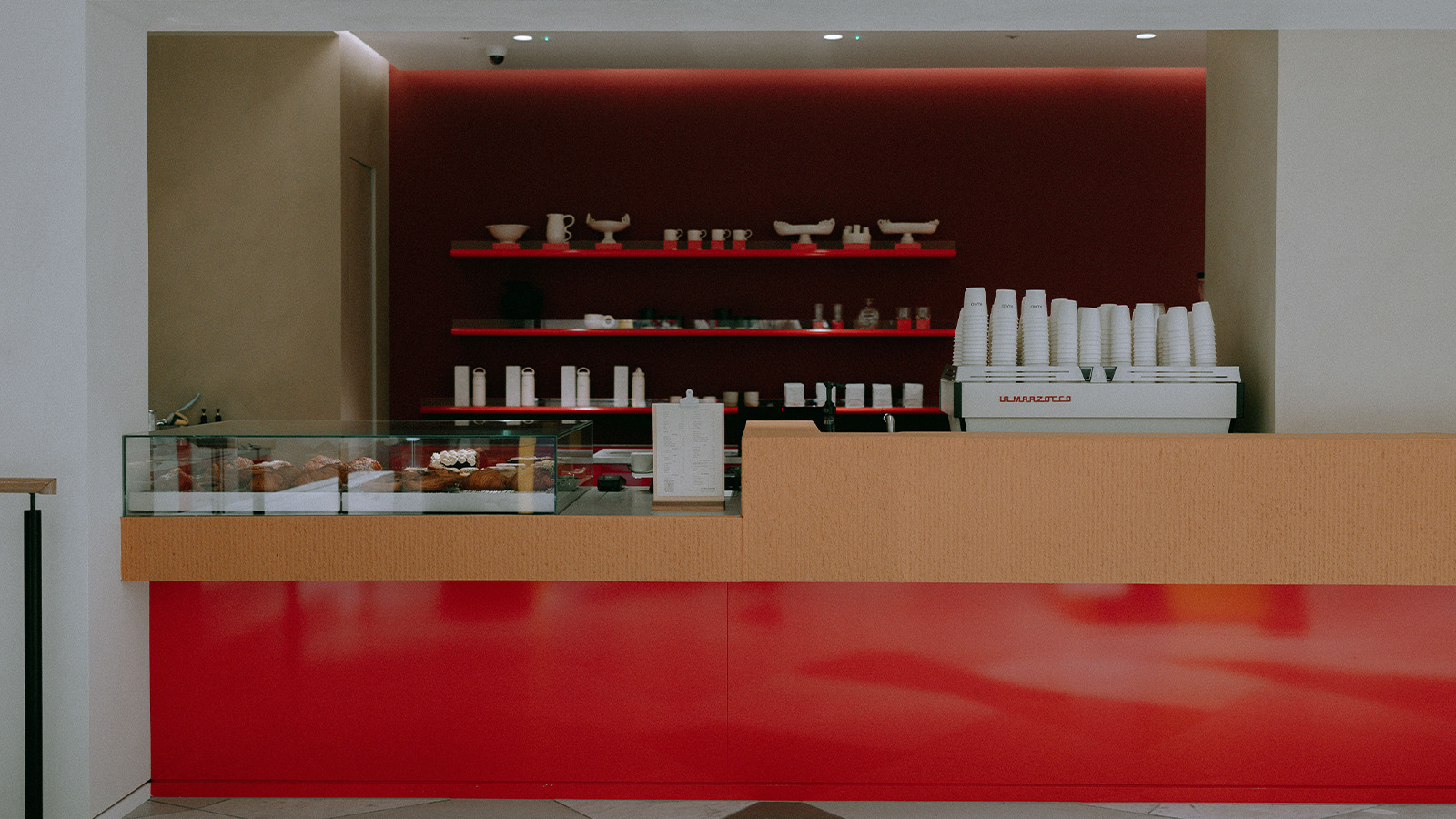 One of London’s favourite coffee shops just opened in Harvey Nichols
One of London’s favourite coffee shops just opened in Harvey NicholsKuro Coffee’s latest outpost brings its Japanese-inspired design to the London department store
-
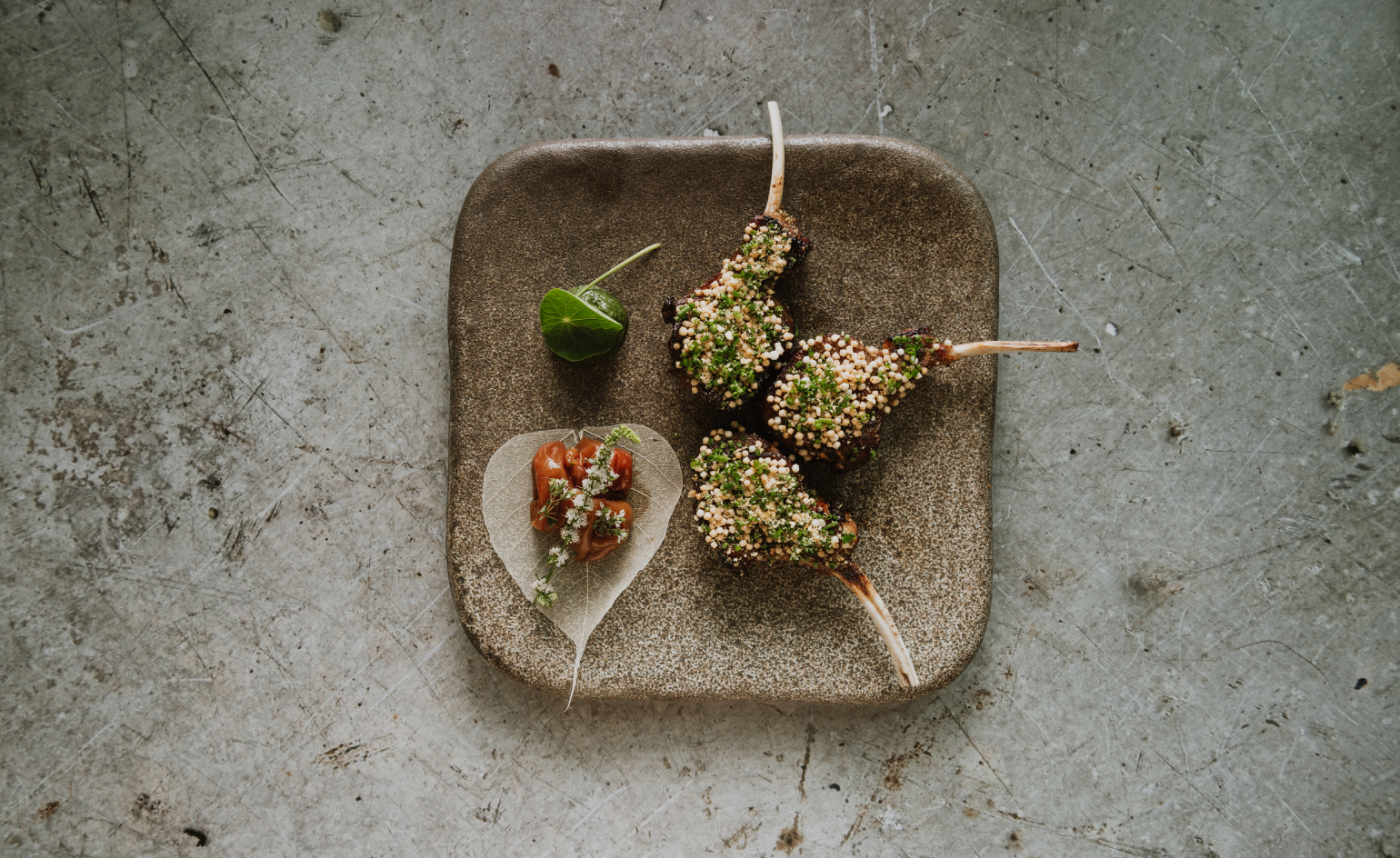 Enjoy a Kyoto-inspired menu with London attitude at this new restaurant
Enjoy a Kyoto-inspired menu with London attitude at this new restaurantAki London offers a serene counterpoint to Oxford Circus, where stately interiors and elevated Japanese cooking cross paths
-
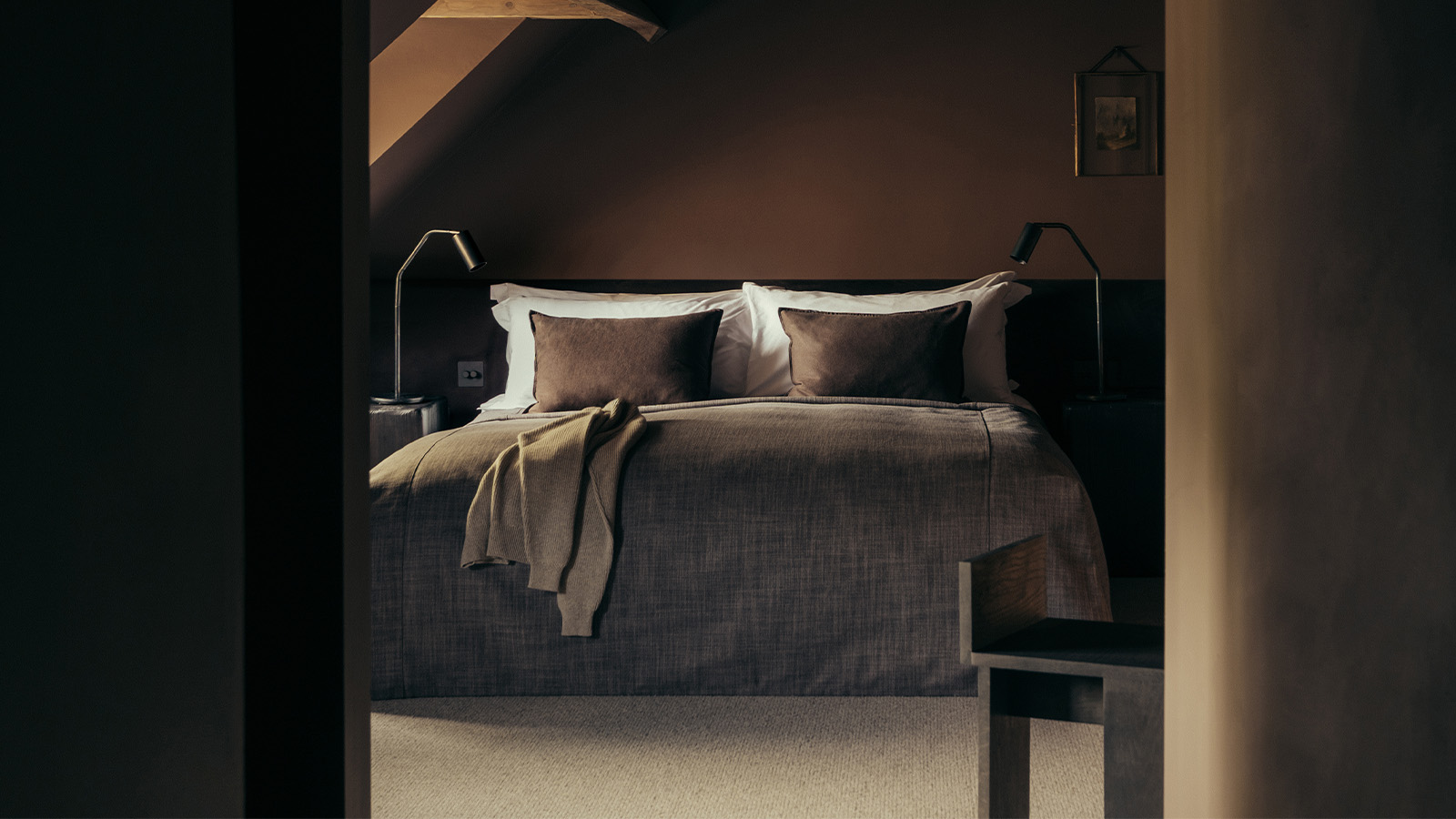 At this charming bolthole in The Cotswolds, doing nothing is an art form
At this charming bolthole in The Cotswolds, doing nothing is an art formLeave your mobile on ‘do not disturb’, switch off and slow down at this 16th-century manor-turned-hotel
-
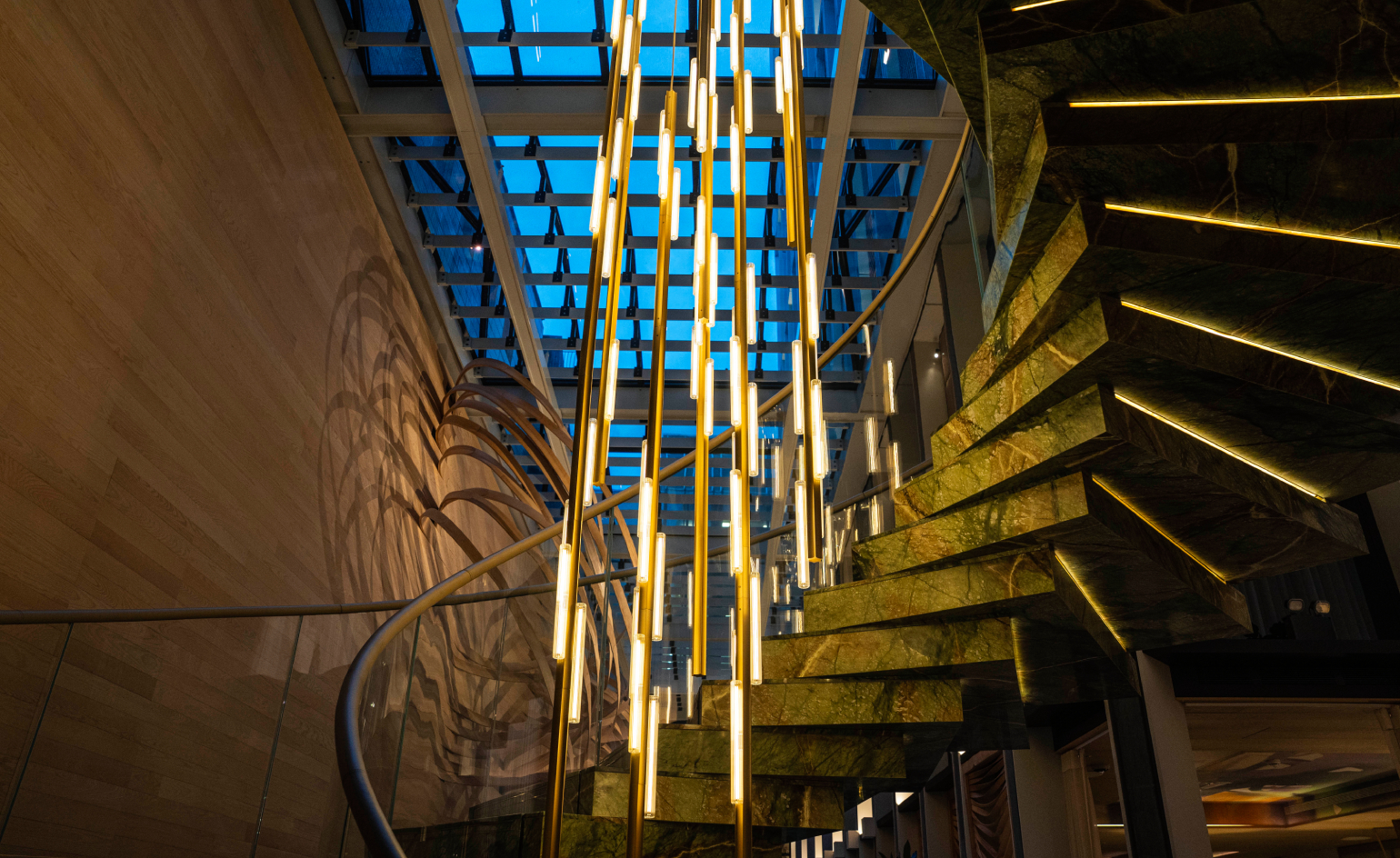 Lee Broom reimagines the Christmas tree at Mandarin Oriental Mayfair
Lee Broom reimagines the Christmas tree at Mandarin Oriental MayfairThe London hotel unveils an inventive take on the festive tradition – with absolutely no needles